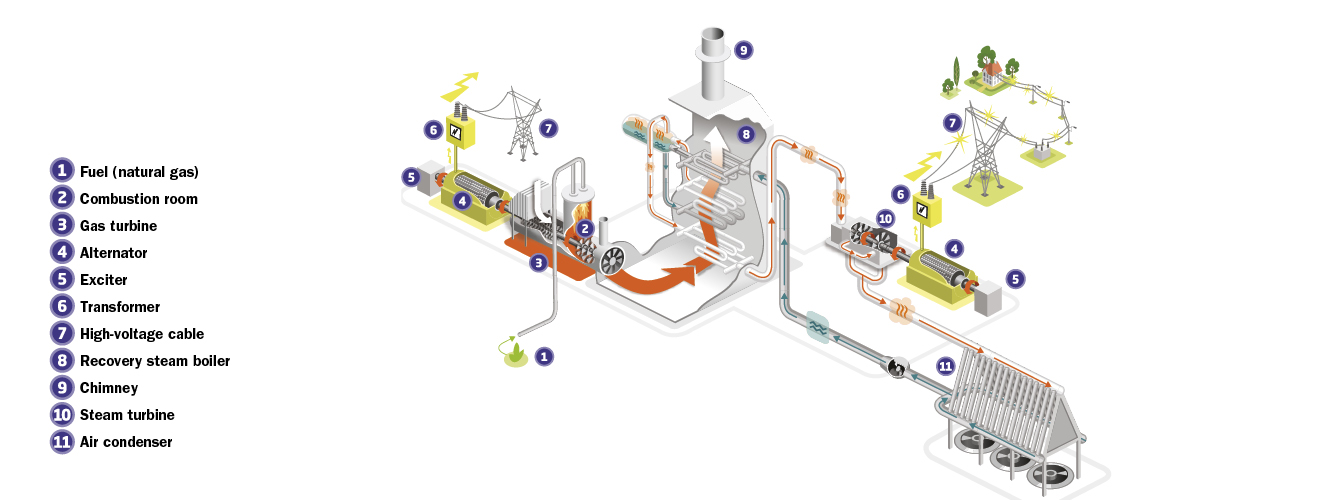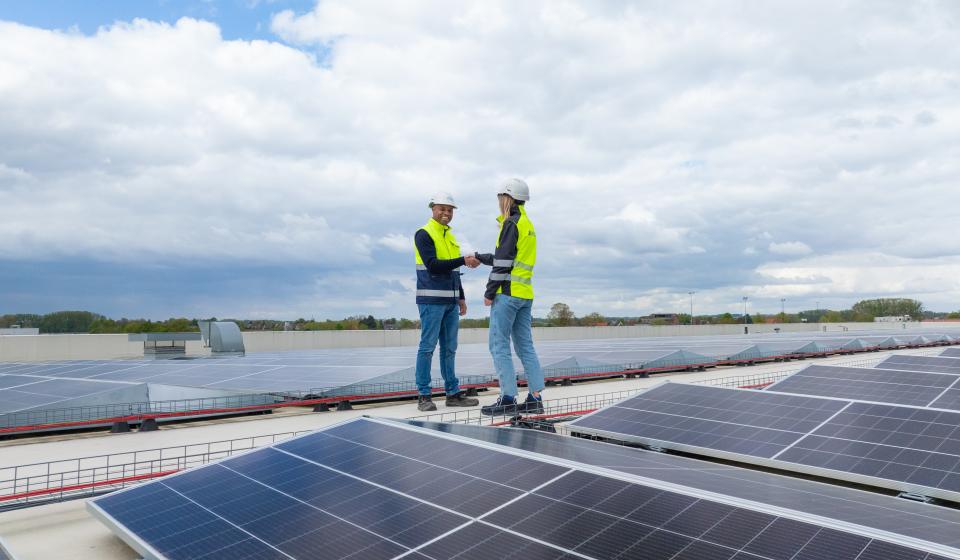Gas
Development of new cycle gas turbine power plants
Belgium is facing major challenges in the field of energy. The law stipulates that all Belgian nuclear reactors must be closed by 2025. These currently produce about half of Belgium's electricity. In the short term, therefore, to ensure the country's energy supply, additional flexible capacity is needed to compensate for this loss. Gas-fired power plants play an important and necessary role in this respect.
As a major producer of renewable energy in Belgium, ENGIE is investing heavily in local wind and solar energy. However, by 2025, this will not be enough to cover our country's energy needs. Moreover, the production depends on the sun or the wind. Moreover, we will also have to be less dependent on imports because many thermal power plants in neighboring countries are being dismantled.
This is why Belgium also needs new flexible production capacity, especially in the form of gas-fired power stations. Thanks to the capacity remuneration mechanism, our country is looking for investors to install this replacement generation capacity in the short term, the so-called CRM auctions. As a historical and responsible Belgian energy producer, ENGIE has participated in these first auctions with the development of two high-tech gas power plants in Vilvoorde and Flémalle.
Both projects were selected in the first CRM auction in Belgium, but due to the impossibility of obtaining the building permit for the new Vilvoorde plant, only the new Flémalle plant was selected.
This 875 MW unit, which will be able to supply more than 1 million households with electricity, has a high efficiency (63%) and can be used flexibly to compensate for a drop in renewable energy on cloudy days without wind. Thanks to state-of-the-art technology, the new plant emits no particulate matter and much less nitrogen oxide than existing plants. CO₂ emissions are the lowest possible for thermal power generation. In the long term, this plant can also become carbon neutral by running on hydrogen, biogas or synthetic methane instead of gas. This fits perfectly with the hydrogen and carbon capture, use and storage (CCUS) projects we are developing. ENGIE is very aware of its role and responsibility in new technologies and fuels for energy production in Belgium.
Our existing gas power plants
ENGIE has been investing in natural gas-fired HST plants since the mid-1990s. The 6 HSGTs in our current production fleet have a total capacity of 2415 MW.
These plants combine a gas turbine with a conventional thermal power plant to produce electricity. They have an efficiency of over 53%, which limits CO2 emissions. We are working closely with the manufacturers to make them more flexible and to enable them to act as a back-up unit for units running on renewable energy.
How does a CCGT work?

• To generate electricity in a CCGT plant, natural gas is first burned in a gas turbine’s combustion chamber.
• The hot combustion gases move the turbine, which is coupled to a generator that generates electricity.
• The combustion gases leave the gas turbine and move to the recovery boiler. They heat the piping in which water flows; this water is then turned into steam.
• The combustion gases then leak out via a chimney. The hot steam powers a steam turbine connected to a generator. Electricity is generated for the second time.
• Upon exiting the turbine, the steam condenses within either an air condenser or water condenser.
If an air condenser is used, the steam moves through a number of pipes and is cooled by an ambient air current produced by the large ventilators. Upon coming into contact with the cold air, the steam condenses and turns back into water flowing towards the recovery boiler. If a water condenser is used for the condensation of the steam, the reheated water is cooled in a cooling tower.
Did you know: there are no pylons or high-voltage lines around the Saint-Ghislain or Herdersbrug CCGT plants – they are all underground.
Cogeneration
Cogeneration involves generating heat and electricity simultaneously in one facility. The creation of heat is the main goal, with the generation of electricity being a secondary concern.
Our generation facilities comprise 6 cogeneration units with a total capacity of 451 MW. These facilities, which transform 85% of energy from fuel to electricity and heat, are located at the sites of our customers who need a lot of industrial heat (chemical companies at the Port of Antwerp, for instance).
We continue to enhance these partnerships and utilise our experience to benefit our business customers. All cogeneration units are tailor-made according to the customer’s needs.
Blast furnace gas
In addition to natural gas, ENGIE Electrabel uses other gaseous fuels in its generation facilities. The conventional power plant in Knippegroen (300 MW) not only burns ArcelorMittal blast furnace gases, but also recovers converter gas from the steel plant. This project demonstrates our desire to team up with our customers and come up with tailor-made solutions. The nearby Rodenhuize power plant, which produced 185 MW of green energy from biomass until March 2023, acts as a "cold" or stationary reserve for the Knippegroen power plant.
Articles and press releases

Mission accomplished: ENGIE's Flémalle power plant is now ready to support the grid
